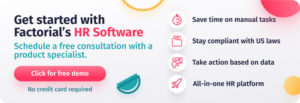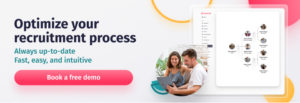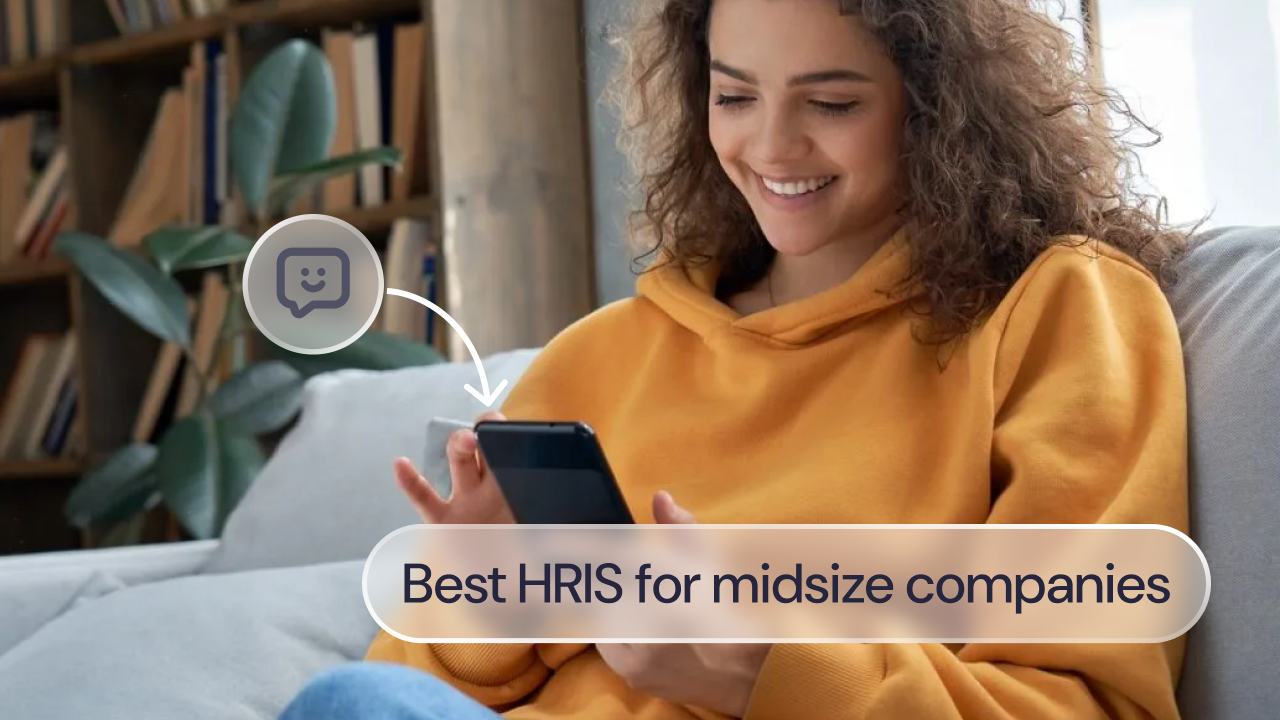Backfilling is when you fill a vacant position in your company, either temporarily or permanently. The aim is to prevent disruptions and maintain operational stability after someone resigns or is fired, promoted or on a temporary leave of absence. As an employer, it’s crucial to understand the importance of backfill positions to ensure business continuity and minimize the impact of these transitions on productivity and team morale.
Do you have a clear understanding of this concept? And do you have strategies in place to backfill gaps in your workforce when unexpected circumstances arise? If not, then you’ve come to the right place.
Today, we are going to share everything you need to know about backfilling, including what it is, what the benefits are, and what backfill strategies you can implement to ensure that your organization remains resilient and efficient, no matter what staffing challenges you face.
- What Is a Backfill Position?
- When You Might Need to Backfill a Position
- Why Are Backfill Positions So Important?
- Backfilling Best Practices
- How Factorial’s HRIS Can Streamline Your Backfill Position Strategies
- Talent management to motivate and empower your team 🚀
What Is a Backfill Position?
Let’s start with the basics: What is a backfill position?
Essentially, a backfill position is a role that you fill to replace an employee who has left your organization or who is temporarily absent. For example, someone might quit without notice (especially if you are located in an “at-will” state) leaving your team in the lurch and you might need to quickly find someone to take over their duties so there is no disruption or negative impact on operations. Or perhaps one of your key workers has had to take emergency medical leave and you need to make sure that their tasks are covered while they are recovering. By backfilling their position as soon as they become absent, you can mitigate the risks associated with sudden staffing changes, ensuring that your business can continue to operate smoothly despite these unforeseen challenges.
When You Might Need to Backfill a Position
The examples in the previous section highlight the two types of backfill positions that you need to prepare for:
-
Temporary backfill: When you hire someone to fill in for an employee who has taken a temporary leave of absence. This can be for reasons including:
- Maternity leave, when an employee takes leave for the birth or adoption of a child.
- Medical leave, when an employee is absent due to health-related issues.
- Personal leave, when an employee takes time off for personal reasons, such as family matters or a personal emergency.
- Vacation, when an employee takes their entitled vacation time.
-
Permanent backfill: When you hire someone to replace an employee who has left the position for good. This can be for reasons including:
- Resignation, when an employee hands in their notice and leaves the company voluntarily.
- Termination, when you fire an employee due to their performance or other issues.
- Retirement, when an employee retires from their role.
- Promotion or transfer, when an employee moves to a new position within the company, leaving their previous role vacant.
Why Are Backfill Positions So Important?
So, we’ve seen what backfill positions are, but why is it so important to implement strategies to mitigate the risks associated with a position being left vacant?
Read on to find out the specific benefits.
Ensure Business Continuity
Filling an empty position quickly ensures there is a seamless transition of duties when someone leaves their role temporarily or permanently. This prevents any potential disruptions to your operations and helps you maintain service levels, ensuring business continuity.
For example, let’s imagine that one of your employees is suddenly promoted to a higher position within the company. This leaves their previous role vacant and crucial tasks unassigned. By having a backfill strategy in place, you can quickly appoint a qualified candidate to take over their responsibilities, ensuring that projects continue without interruption.
Maintain Team Productivity
To the same effect, implementing a backfill policy helps you maintain productivity and ensure consistent, ongoing organizational performance. By quickly filling an empty role before it impacts productivity, you can avoid potential workload imbalance or the risk of certain tasks being left unfinished. This helps you support the unique dynamics of your team and maintain a sense of collaboration.
Meet Project Deadlines
Again, following on from the above points, a backfill policy can help you prevent project delays and bottlenecks so that resources can be allocated efficiently and team members can achieve their milestones and benchmarks. By quickly filling vacant roles, you ensure that all critical tasks and responsibilities are covered, maintaining the momentum of ongoing projects. This proactive approach minimizes disruptions and keeps workflows chugging along, helping your team stay on track to meeting their deadlines.
Retain Company Knowledge
Backfill positions are crucial for retaining company knowledge. When an experienced employee leaves or takes a temporary leave of absence, they often take valuable insights and expertise with them. By quickly filling these positions, either temporarily or permanently, you ensure that essential knowledge and skills are preserved within the organization. This continuity is vital for maintaining the quality of work and preventing knowledge gaps that could disrupt operations.
Additionally, a well-planned backfill strategy allows for a smoother knowledge transfer process, where the departing or absent employee can effectively train their replacement, ensuring that critical information is retained and used efficiently.
Reduce Training Costs
Backfilling positions helps you significantly reduce your training costs. Why? Because when you quickly fill vacant roles with experienced and knowledgeable employees, either from within the organization or through strategic external hiring, you no longer need to provide extensive training. This is because internal candidates are already familiar with your company processes and culture, so they require minimal onboarding. External hires, in turn, will have the specific skill sets needed for the new position (provided you have conducted a thorough recruitment process), so they can hit the ground running. This efficiency not only reduces your training expenses but also helps you onboard new hires into their roles much faster than if you didn’t have a backfill strategy in place.
Maintain Employee Morale
A backfill strategy can help you maintain employee morale when someone leaves their role. This is mainly because, as you have prevented the absent employee’s colleagues from being forced to take on extra work to carry the unattended role, your employees won’t feel burdened and risk experiencing stress and burnout. This helps you promote a supportive work environment where employees are far less likely to need to take stress leave because of the resulting toxic work environment (leaving you with even more vacant positions that you need to fill – it’s a domino effect).
Reduce Turnover Impact
Aside from the risk of stress and burnout, if employees feel overworked because one of their colleagues has left and you failed to fill their empty role, they are far more likely to hand in their notice, impacting your turnover rate. This is important because a high employee rotation rate can have a serious negative impact on your company.
For one thing, it has a knock-on effect on the engagement, morale and productivity of existing employees as they sense the instability within the team. In fact, low productivity is one of the first visible signs of high turnover. This, in turn, can impact your operations and customer satisfaction levels if the quality of work declines or if there are delays in service delivery.
Not only that, but with constant turnover, it’s difficult for employees to build trust and confidence in one another. This makes it very difficult to create a shared company culture. And once several team members have abandoned ship, your remaining employees may well follow suit.
Finally, a high turnover rate can be costly for your business. In fact, according to a report on the impact of employee turnover, the average cost of turnover is $4,969 per employee.
Support Succession Planning
Having a comprehensive backfill policy in place can help with succession planning. By anticipating potential staffing shortages and putting a plan in place to prepare employees for future leadership roles, you can ensure the continuity of your talent pipeline and build organizational resilience. This reduces your reliance on external talent acquisition and promotes internal career growth. It also helps you foster a culture of development and retention, as employees see clear pathways for advancement. This proactive approach not only strengthens your leadership bench but also enhances overall company stability, ensuring that you are well-equipped to handle any future staffing changes
Foster Organizational Stability
Finally, a backfill policy can help you create a stable work environment and foster organizational stability. Why? It ensures that each role in your organization remains filled with competent individuals, despite unforeseen vacancies or staffing challenges. This continuity is essential not only for maintaining routine operations but also for upholding team morale and trust in the company’s management. This stability can lead to lower turnover rates and a stronger, more engaged workforce. Plus, all this has a knock-on effect on your company’s reputation and employer brand, making it easier to attract and retain top talent in the long run.
Backfilling Best Practices
So far so good! You still with us? Great!
OK, so we’ve seen what backfill is and why it’s so important to implement a backfill policy, but what strategies will help you plan for these unforeseen circumstances so that you can maintain continuity and operational stability?
The following sections will explore effective strategies for backfilling positions, including making the most of internal talent, designing a smooth onboarding process, and implementing measures for document and knowledge transfer.
Here we go!
Conduct a Needs Assessment
The first thing you need to do is conduct a thorough analysis of your workforce to identify critical roles and the skills required for each position. This will help you analyze the impact of each position being left empty so that you can prioritize roles that have the biggest impact on your operations.
For instance, you will probably need to prioritize roles that directly affect your core business functions, such as key project managers, lead engineers, or customer service supervisors. Less significant roles, such as administrative assistants or support staff, are still important for your business, but they will probably not have as much of an impact on your operations so you can backfill them with less urgency.
This process will also highlight which skills you need to look for when you replace the departing or absent employee. This will help your recruitment process run far more smoothly as you will understand exactly what you are looking for.
Create a Detailed Job Description
Once you’ve audited your workforce and created a list of roles that you should prioritize in your backfill strategy, the next step is creating detailed job descriptions for all of these roles. These job descriptions should outline the key responsibilities of each role and the essential skills, qualifications and experience that potential candidates will need.
It’s also a good idea to define your performance expectations at this point as this will help you set clear criteria for evaluating candidates so that new hires can meet the demands of the position from day one. Plus, well-defined job descriptions make the recruitment process more efficient and transparent, which helps you attract the right talent quickly and effectively.
Make the Most of Internal Talent
Although external recruitment will form a significant part of your backfill policy, don’t forget the importance of making the most of the talent that you already have in your organization. By focusing on internal mobility, you can develop existing employees to fill critical skill gaps. In fact, many publications, including the Harvard Business Review, now claim that internal mobility is the most efficient path towards organizational success.
Aside from being cheaper than paying a recruiter, internal mobility also boosts retention and improves employee engagement. It provides employees with career development opportunities, enabling them to meet their professional goals and actively improve their skills.
For this strategy, start by identifying potential internal candidates. This requires understanding the skills, motivations and backgrounds of each member of your workforce and the skills that they might need to develop before being qualified to fill a new role. Once you’ve done that, create development plans tailored to these candidates, offering them training, mentorship, and opportunities to gain the necessary experience.
Implement a Smooth Onboarding Process
A structured onboarding plan should be a key component of your backfill policy. This plan ensures that new hires, whether temporary or permanent, can quickly adapt to their roles and start contributing effectively.
For this, we recommend creating a comprehensive employee onboarding checklist that includes pre-arrival preparations, orientation sessions, role-specific training, and regular check-ins to ensure a smooth transition and integration. Use onboarding software to streamline the process and make sure that no stone has been left unturned.
Finally, a crucial component of the onboarding process is the quality of onboarding documents that you give your new starters on their first day working for you (especially if you are hiring externally). These are the documents that new employees need to review and sign when they first join your business. These papers range from government forms to records specific to their role and to your business. Aside from legal requirements, the right onboarding paperwork will help new hires get off on the right foot and blend into your company culture.
Document and Transfer Knowledge
Finally, make sure you implement measures for the documentation and transfer of knowledge. This will help you avoid any crucial knowledge gaps so that the replacement employee has all the information they need to jump straight into their new role. Make sure you account for detailed process documentation, access to important resources and contacts, and a thorough handover period where outgoing employees can transfer their knowledge and expertise to their successors (where possible).
The best way to organize all this information is by using document management software. This valuable tool can help you centralize and streamline the storage, sharing, and updating of critical documents. That way, the candidate you select to backfill the empty role will have easy access to the information they need.
How Factorial’s HRIS Can Streamline Your Backfill Position Strategies
And that’s pretty much everything you need to know about backfilling! You can now use all the information we have shared today to create your own backfill policy so that your organization is well-prepared to handle any staffing changes.
But you don’t have to do all of this alone. By using the right tools and technology, you can streamline the process and make it much easier to design and implement your new policy.
For instance, Factorial’s HRIS offers a number of essential tools and features that can help you create a policy that protects you from the impact of a key position in your company being left unmanned.
Specifically, with our recruitment software you can:
- Easily create and post job openings across multiple platforms.
- Centralize all candidate applications.
- Use automated screening tools to quickly filter out unqualified candidates.
- Create offers, forms, email templates and automate responses.
- Customize your own career page to attract top talent.
- Schedule interviews effortlessly with integrated calendar tools.
- Track each candidate’s status throughout the recruitment process.
- Use dashboards to monitor key metrics such as application volume, time-to-hire, and candidate sources.
- Offer a smooth and professional application process, reflecting well on your company.
- Communicate with candidates using automated notifications and updates.
Plus, with our software, you also get access to onboarding software, document management software, and a learning and development dashboard so you can seamlessly integrate new hires, organize and share critical company knowledge, and continuously upskill your workforce. That way, you can rest assured that your backfill policy is supported by robust infrastructure, helping you maintain efficiency and productivity even during challenging staffing transitions.



